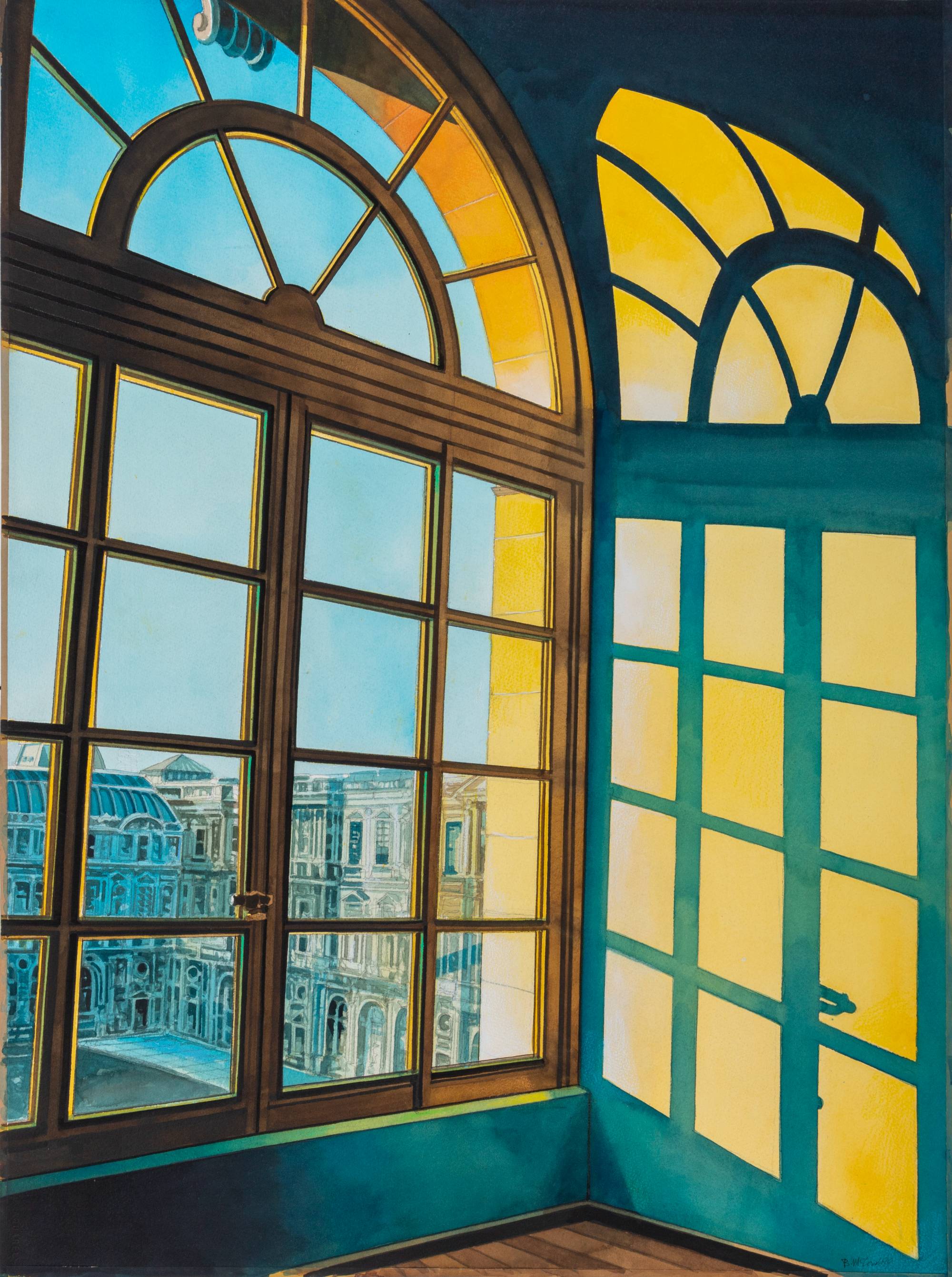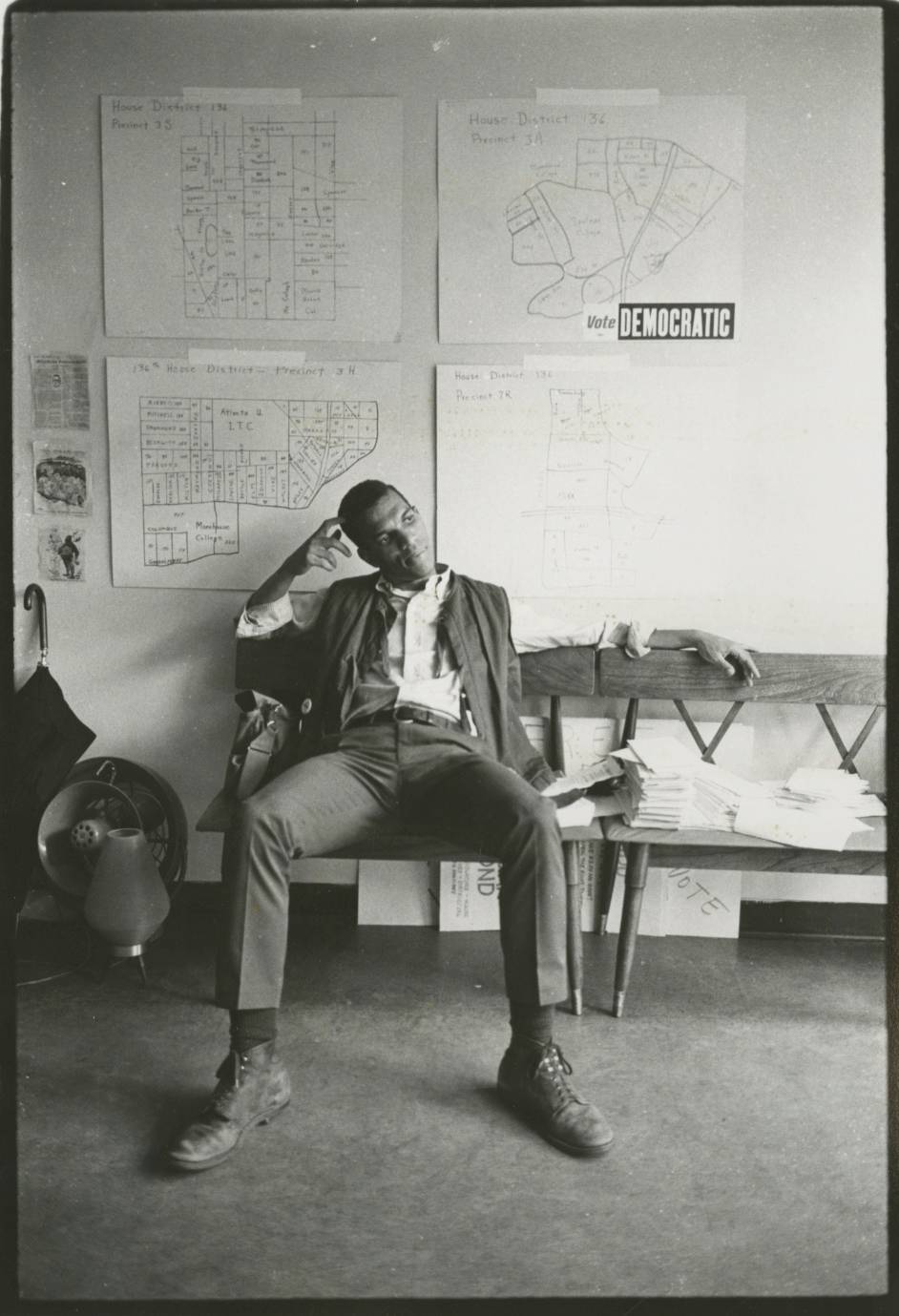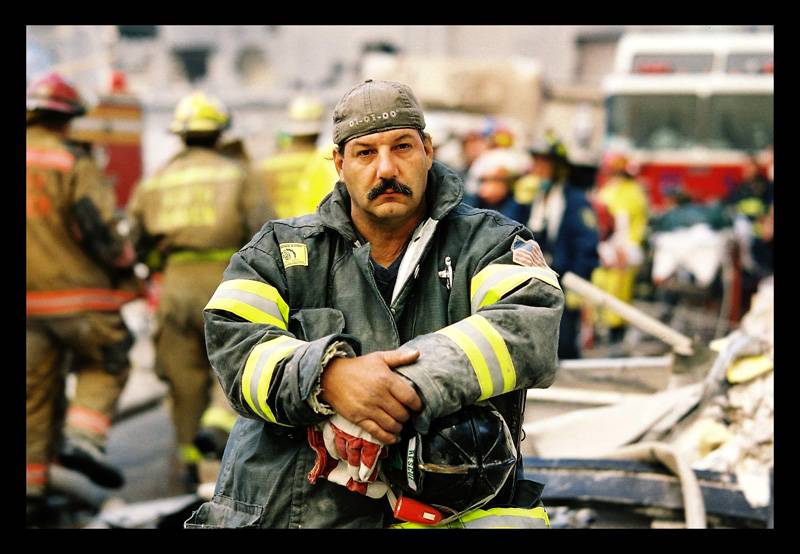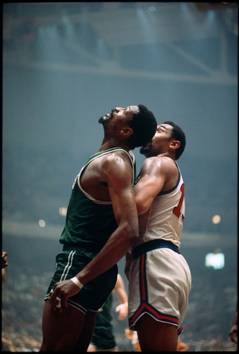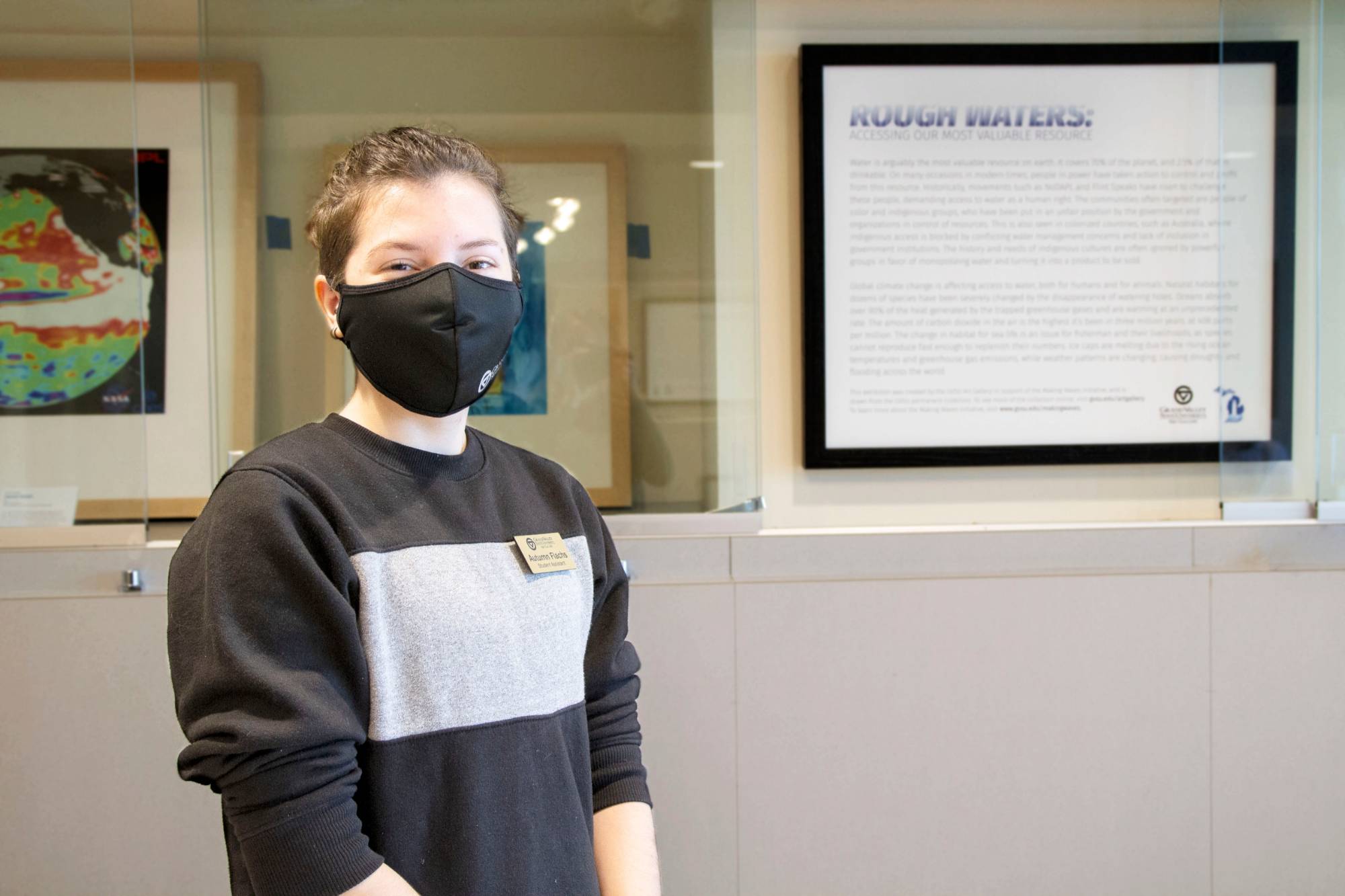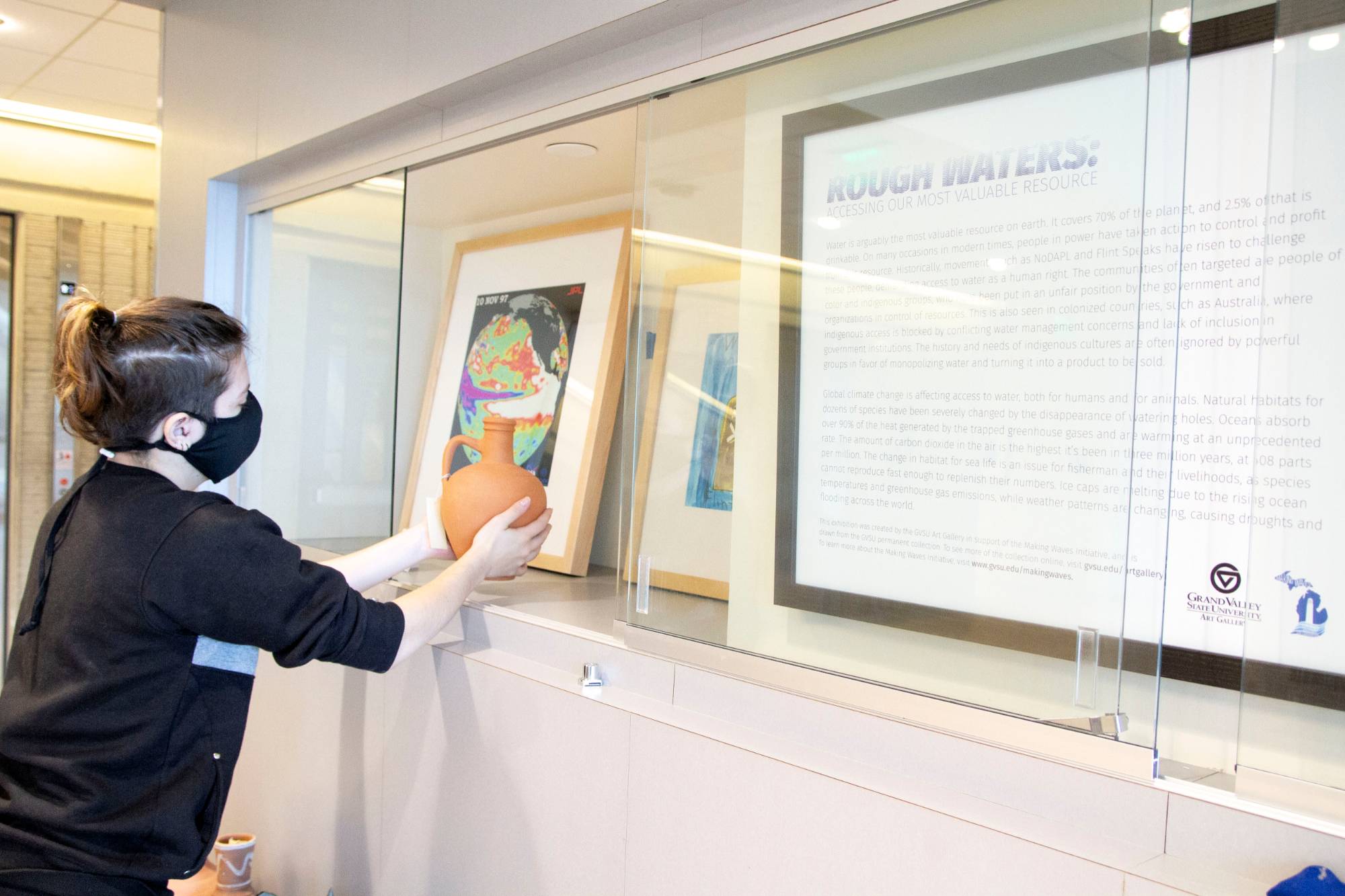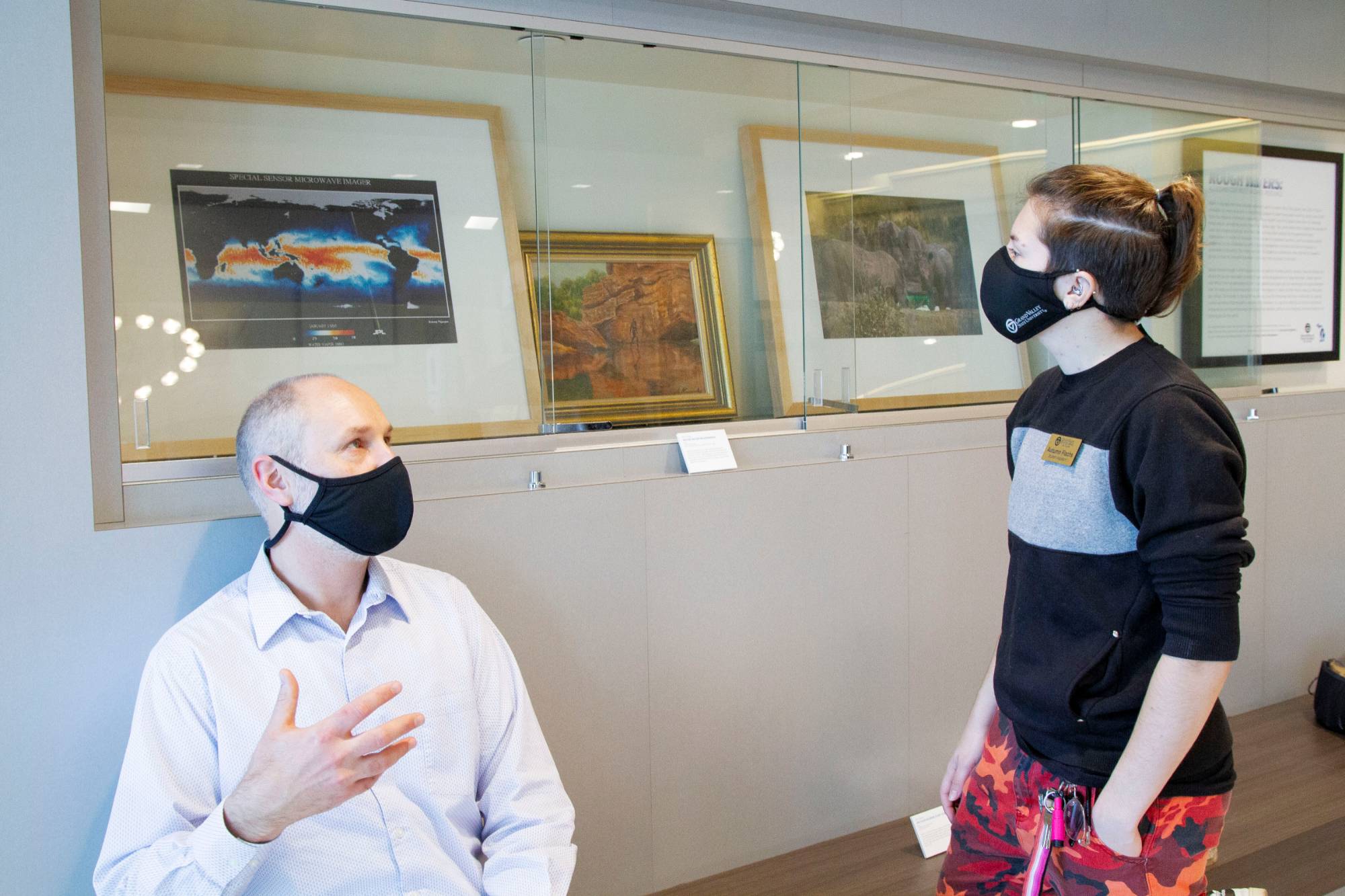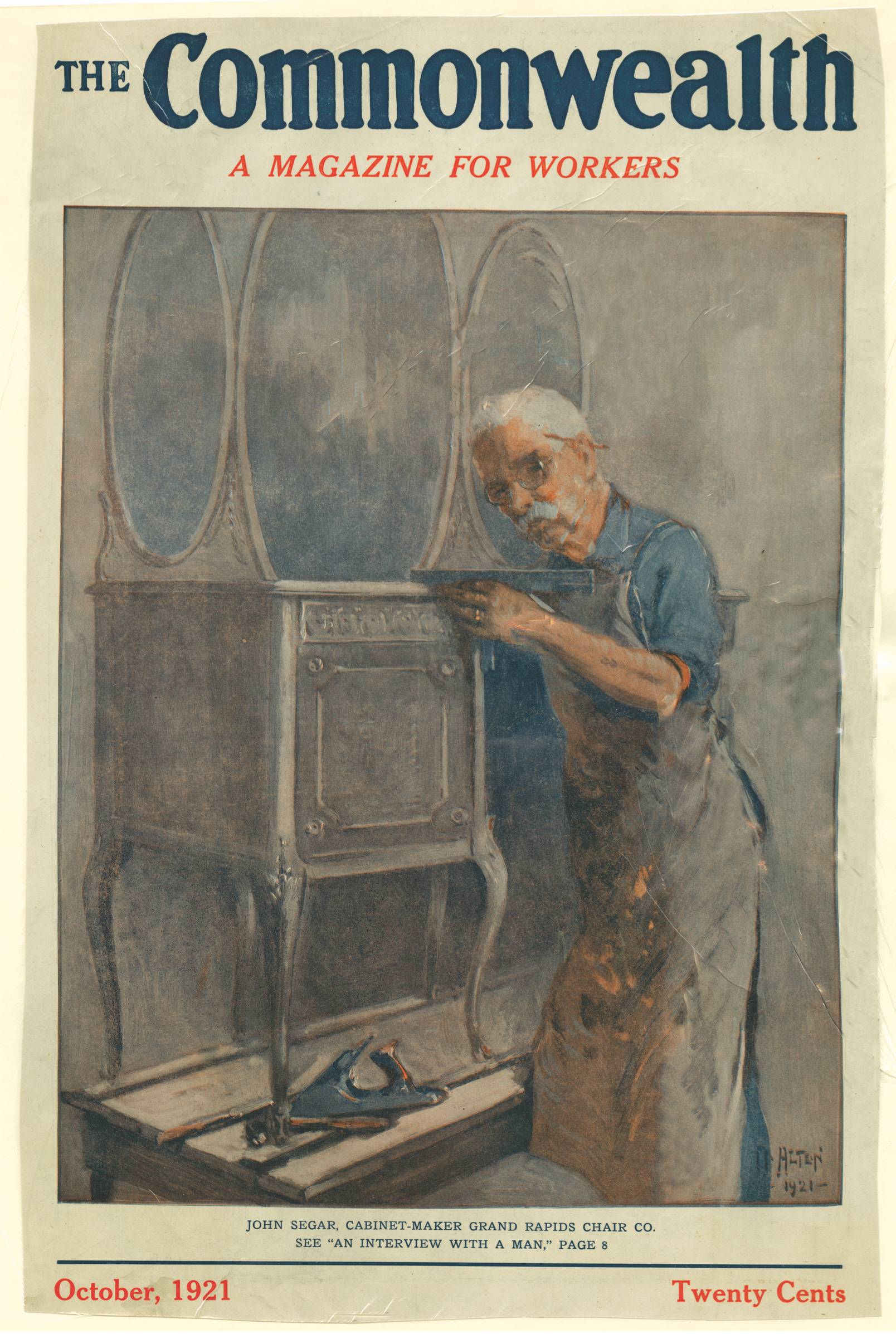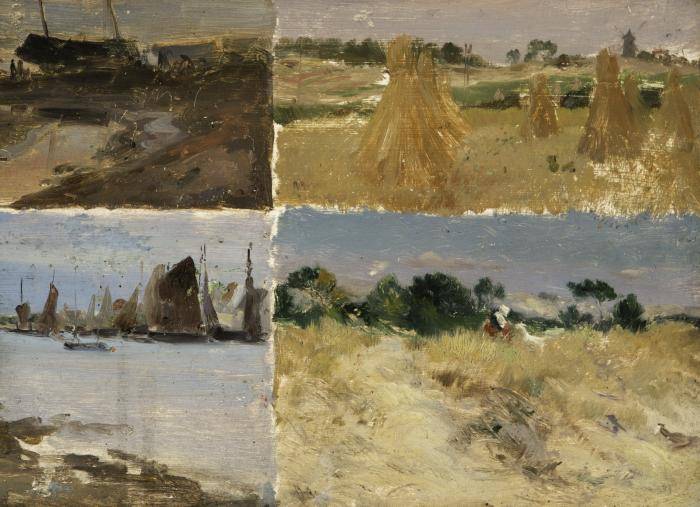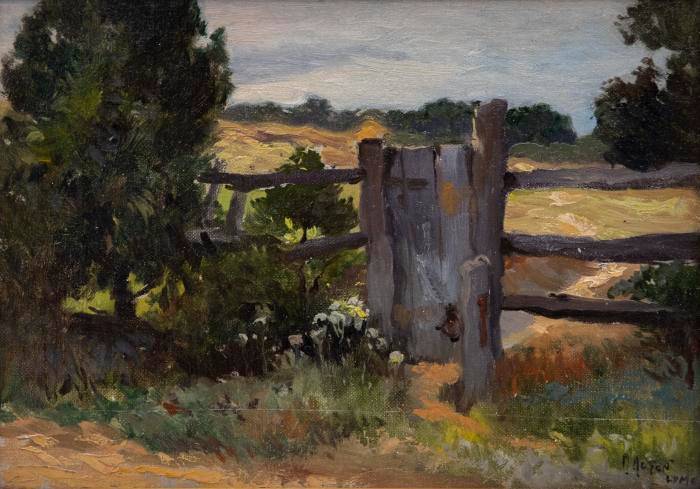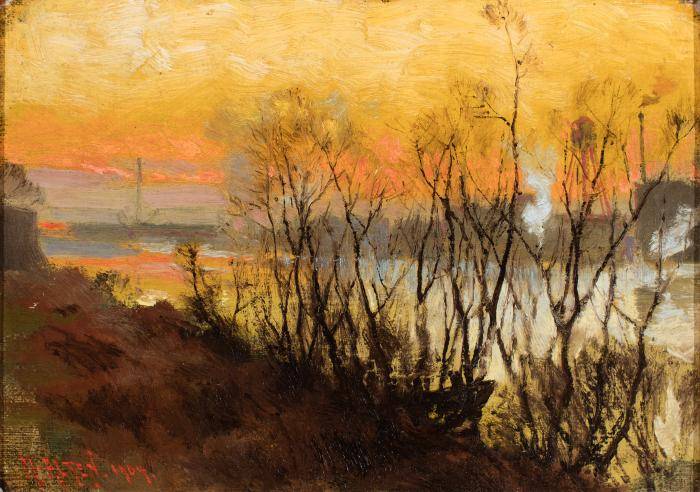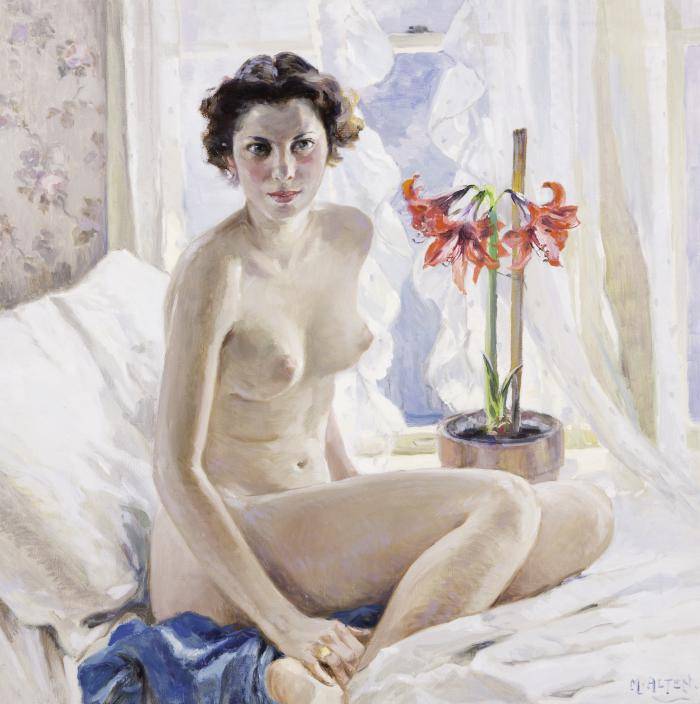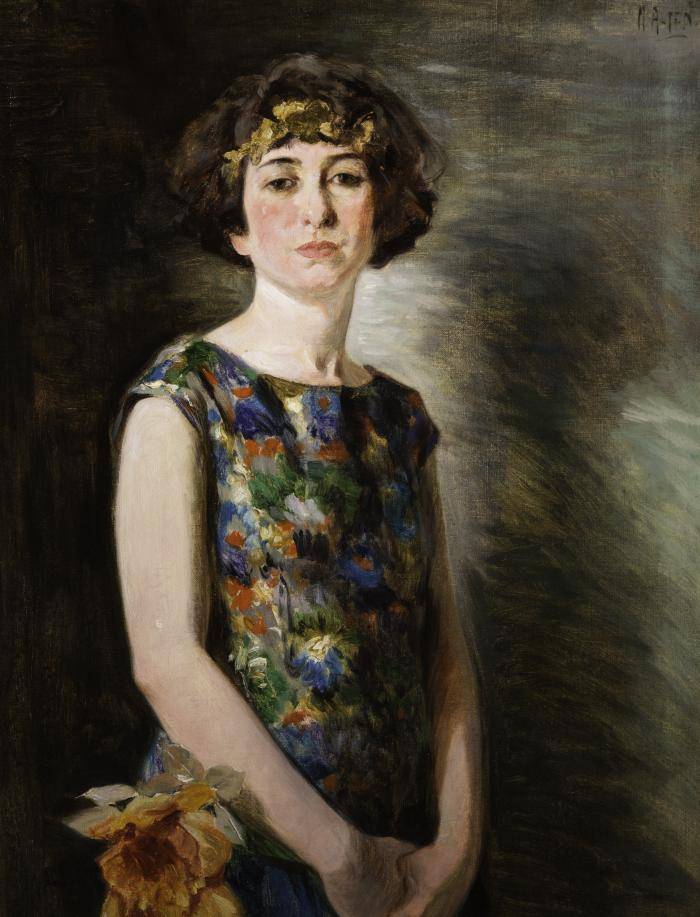GVSU Art Gallery Blog
Permanent link for Artist Profile: Armand Merizon on August 27, 2024
Armand Merizon was an artist who refused to be held to any one style or template for how art should be represented. He threw off the mantle of tradition, worked through his disabilities, and refused to let go of the brush that both defined and bound him from his earliest years to his last breath.
As a boy growing up in Grand Rapids, MI, he was possessed by a wandering spirit and resisted the confinement of his early years among his family of strict Dutch immigrants. He struggled with illness and the confinement of schools. He lived through the Great Depression, joined the military during World War II, and studied art in New York and Europe. Merizon was a visionary who experienced the world at large to be both his most-suited classroom and greatest teacher. Merizon’s work never stopped expanding throughout his life and his restlessness was clearly illustrated on canvas, where he created more than 1,000 works of art during his lifetime.
Merizon was an artist who refused to be held to any one style or template for how art should be represented. He threw off the mantle of tradition and perfected his own style, adding bright colors, abstract patterns, and textures to even the most common of landscapes. He proved to be a prolific painter, even after having been diagnosed with macular degeneration and rheumatoid arthritis. These health issues forced him to evolve his painting style but never slowed his dedication to the arts.
Explore more works in the collection by Armand Merizon.
The GVSU Art Gallery also maintains the online library and catalogue raisonné of Armand Merizon’s paintings and drawings. The catalogue documents more than 1000 works of art. Newly rediscovered works are regularly added to the catalog after authentication and documentation.
Explore the Armand Merizon Catalogue Raisonné.
Farmstead, Armand Merizon, acrylic on board, 1990, 2021.1.27.
North Country, Armand Merizon, acrylic on canvas board, 2008, 2021.1.13.
Categories:
The Artistic Mind
Posted
by
Nicole Webb
on
Permanent link for Artist Profile: Armand Merizon on August 27, 2024.
Permanent link for Celebrate World Watercolor Month on August 27, 2024
Did you know that July was founded as World Watercolor Month in 2016?
The celebration was founded by artist, author, social activist, and creator of Doodlewash Charlie O’Shields as a month to inspire people to paint with watercolor while raising awareness around the importance of art and creativity in the world. Anyone can join in the celebration, whether you are a master watercolorist or trying the medium out for the first time. For those seeking the ultimate challenge, World Watercolor Month encourages 31 watercolors in 31 days!
Check out other events and ways to participate in World Watercolor Month 2024.
Looking for inspiration or ideas for your own adventures with watercolor? Check out some of the watercolor artists featured below from the GVSU Art Gallery Collection!
Rein Vanderhill
In Rein Vanderhill’s large floral and fruit paintings, he uses
watercolor to create high contrast and intense colors as well as
subtle gradations and shadows. Vanderhill is noted for focusing on the
unusual shapes of the shadows on the leaves and petals and often
making the deep and dark negative shapes between the leaves and petals
the most interesting part of the paintings. The paintings look almost
photographic from a distance, but when viewed up close, the smooth
paint strokes can be seen.
Explore more works by Rein Vanderhill.
Rana Chalabi
Rana Chalabi is a Syrian/Lebanese artist who works in Cairo,
Egypt. She works within a variety of mediums, like charcoal, inks,
mixed media, oils, sculptures, and printed graphics but is best known
for her serene watercolor landscapes. She often does her watercolors
on site, or in “plein air," but also works from photographs in
her studio on the banks of the Nile. Through her use of watercolors,
Chalabi can play with layers of color and light, representing both
nature and architecture.
Explore more works by Rana Chalabi.
Mike McDonnell
Mike McDonnell was a Muskegon, Michigan-based artist who studied
art in both Chicago and New York. Initially receiving training in
classical portraiture and working primarily with oil paints, it wasn’t
long before McDonnell found his own style in watercolors. He became
well known for still life paintings with the most absurd arrangement
of items, often precariously stacked, in dynamic colors. McDonnell
would apply multiple, thin, layers of watercolor paint to achieve the
rich, vibrant, and realistic images he painted. The results of his
painting technique are not the typical look of watercolor. The realism
of his paintings shows mastery of the use of the medium.
Explore more works by Mike McDonnell.
BeiBei and Leilei Chen
Twin sister artists, Beibei and Leilei Chen explore the
relationship between culture and the natural environment. Their
watercolors tell stories of life and death, science and art, and
religion and politics. In their images, Leilei and Beibei use multiple
methods and mediums to represent pollution in landscape as a global
issue, on both macro and micro levels. By exploring how the medium of
watercolor lends itself to blending colors, their images appear like
an image looking into a microscope.
Explore more works by BeiBei and LeiLei Chen.
Bruce McCombs
Bruce McCombs is a local artist specializing in painting,
especially watercolor, and etching. Through his images, McCombs turns
ordinary objects and scenes into spectacular displays and colorful
reflections. His subjects include urban settings such as New York City
or his hometown of Cleveland, Ohio, architecture, neon signs, planes,
trains, and vintage automobiles. The transparency of watercolor allows
McCombs to paint everyday scenes, spaces full of light and shadows, as
well as a variety of architectural elements, from shiny chrome to
translucent glass.
Explore more works by Bruce McCombs.
Explore other examples of watercolor paintings in the GVSU Collection.
Untitled (Tulips), Rein Vanderhill, Watercolor, n.d., 2014.113.27.
Harbor #2, Rana Chalabi, Watercolor, 2011, 2012.39.9.
Untitled (Bottle Family Tree), Mike McDonnell, Watercolor on board, n.d., 2017.97.363.
Malignant Landscape, BeiBei and Leilei Chen, Watercolor, 2016, 2018.7.1.
Paris, Louvre, Bruce McCombs, Watercolor, 1999, 2002.00110.1
Categories:
Collection Highlights
Posted
on
Permanent link for Celebrate World Watercolor Month on August 27, 2024.
Permanent link for The Lens of Humanity: Documentary Photography on August 27, 2024
Documentary photography is a style of photography that gives a candid and authentic representation of people, places, objects, and events. Before the popularity of television and the rise of the internet, documentary photography was an important way for people to learn about world events or see what life looked like across the globe. As digital technology advances, the demand for professional photography has diminished. In contrast, many contemporary documentary photographers are putting their works in galleries versus newspapers to shed light on injustice and inequality.
As an art form, documentary photography has the profound ability to transport the viewer into unfamiliar environments, activities, and viewpoints. It captures images of humanity and of individuals whose lives and backgrounds may be drastically different from our own. The photographs show us new perspectives, cultivating empathy and compassion. These images challenge assumptions or stereotypes the viewer has about other cultures and they evoke emotional responses.
The real-life moments presented through documentary photography give the viewer a look into the life of the subject being photographed. From joy and excitement to sadness and anger, these images portray real moments and real emotions. Authentic and relatable, documentary photographs create deep connections to their viewer and audience, providing a lasting impact.
From scenes of war and protest to celebratory sports events, from images of raw heartbreak to elated joy, the GVSU Art Collection includes several examples of documentary photography. The images in our collection record events and situations that have shaped the world in which we live.
Douglas R. Gilbert
At the age of twenty-one, Douglas R. Gilbert joined the staff
of Look magazine in New York as the second youngest
photojournalist in the magazine’s history. From a young age, Gilbert
was attracted to cameras and photography and could be found taking
pictures of his local Michigan neighborhood and friends. After
President Lyndon B. Johnson signed the Voting Rights Act of
1965, Look magazine sent Gilbert to Alabama to photograph
Ivanhoe Donaldson, a leader in the Civil Rights Movement, championing
voting and registration rights for Black Americans. The GVSU
Collection has several photographs from the time Gilbert spent with
Donaldson as well as other Look magazine assignments
and personal projects.
Explore more photographs by Douglas R. Gilbert.
Peter Turnley
Peter Turnley began photographing in 1972 in his hometown of Fort
Wayne, Indiana. He and his twin brother, David, photographed the life
of the inner-city, working-class McClellan Street, working to give a
voice to the heart of America. Since this early project, his
photographs have drawn attention to the plight of those who have
suffered great hardships or injustice, while finding that many aspects
of life are also beautiful, poetic, just and inspirational. Turnley’s
photographs have been on the cover of Newsweek magazine 43 times.
Explore
more photographs by Peter Turnley.
Donna Ferrato
Donna Ferrato is an internationally recognized photojournalist
best known for her documentation of the hidden world of domestic
violence. Her first book, “Living with the Enemy,” documents her time
in New York City in 1970 photographing the heady nightclub culture at
legendary establishments such as Studio 54 and Xenon. There she met
and began documenting the life of prominent swinger couple known as
Garth and Lisa. One night she witnessed Garth beating Lisa, a night
that would forever change the path of Ferrato’s life and career. For
the next decade, she rode in police cars, slept in shelters, and
stayed at the homes of battered women, traveling the country
photographing domestic violence.
Explore more photographs by Donna Ferrato.
Walter Iooss
Walter Iooss Jr. is an American photographer best known for his
award-winning images of sports’ greatest athletes, like Michael
Jordan, Tiger Woods, Scottie Pippen, and Muhammad Ali. His career
began with Sports Illustrated, a magazine Iooss has
contributed to for over 50 years. Over the years he also worked with
Atlantic Records to photograph performers like James Brown, Jimi
Hendrix and Janis Joplin. He also photographed an extended study of
the Olympic athletes during the 1984 Summer Olympics in Los Angeles,
which resulted in the book “Shooting for the Gold.” His photographs
have appeared in numerous magazines, advertising campaigns, and even
baseball cards.
Explore more photographs by Walter Iooss.
Ivanhoe Donaldson (For Look magazine), Douglas R. Gilbert, Photographic Print, 1965, 2018.48.2000.
Ground Zero, New York City, Sept, 12, 2011, Peter Turnley, Archival Pigment Print, 2001. 2020.46.52.
Myth America Protest Against the Exploitive Representation of Women In Beauty Pageants, Los Angeles, California, Donna Ferrato, Archival Pigment Print, 1986, 2020.47.16.
Bill Russell and Wilt Chamberlain, Philadelphia, Pennsylvania, Walter Iooss, Archival Pigment Print, 1966, 2020.47.37.
Categories:
Collection Highlights
Posted
on
Permanent link for The Lens of Humanity: Documentary Photography on August 27, 2024.
Permanent link for Rough Waters: An Exhibition About Water on December 14, 2020
Student Perspective Provided By:
Autumn Flachs
Major: Art Education
Class of 2022
During the Fall 2020 semester, Autumn Flachs, class of 2022, in collaboration with Curator of Exhibitions, Joel Zwart, selected artworks from the GVSU permanent art collection representative of a broad range of water-related issues for an exhibition titled Rough Waters, now on view in the exhibition cases on the first floor of Zumberge Hall, Allendale campus. They also conducted research for and wrote the labels and introductory statement to accompany the exhibition.
"For this exhibition, focusing on the socioeconomic and environmental impact of modern-day water issues was important to us. I looked specifically for works that either commented on water rights or the environmental effects of water-based geographical change, or were able to contextualize these issues with informational graphics. I am particularly fond of the two pieces from the Young Flint Speaks project, where young students from Flint, Michigan made drawings about their experience with the ongoing water crisis in their city. Kids are very straightforward and genuine about what they think and it's that’s obvious in the drawings. Everyone hopes for children to be as happy and healthy as possible, so it’s a shock to see the horrible messages in the works. Words like, ‘help us…’ ‘save us…’; bring up sobering but necessary feelings and help spread awareness about the Flint water crisis.
For me personally, I loved this project and the process of creating
it. I am an art student myself and so much of my own work is social
and political commentary, on issues like Queer rights and politics, so
I connected a lot of the pieces that were contenders for this
exhibition. Water rights are an increasingly important issue that
impacts everyone around the globe and deserves broader attention from
first-world media. I hope that this exhibition sparks a conversation
between people, and showcases why we all need to come together to
solve our climate crisis as a unified front."
-Autumn Flachs
View the artwork in this exhibition.
Categories:
Student Perspectives
Posted
on
Permanent link for Rough Waters: An Exhibition About Water on December 14, 2020.
Permanent link for Mathias Alten's Connection to Furniture City on October 22, 2020
Student Perspective Provided By:
Erin Harshberger
Major: English and Education
Minor:
Political Science
Class of 2021
In preparation for the exhibition MATHIAS J. ALTEN: AN AMERICAN ARTIST AT THE TURN OF THE CENTURY that traveled to The Dennos Museum Center at Northwestern Michigan College in Traverse City, September 20, 2020 through January 31, 2021, the #GVSU Art Gallery team, including staff and students, gathered stories and information about Alten's life and work that create a vivid portrait of the artist. Here, Erin Harshberger, GVSU class of 2021, reflects on Alten's role in the furniture industry of early 20th Century Grand Rapids and the lasting legacy of that period.
'Magazine Cover, Commonwealth, Cabinet Maker'
Mathias Alten
1921
Courtesy of Grand Valley
State University Special Collections & University Archives
"In the early 1900s Grand Rapids was a leader in fine,
handcrafted furniture production due to the availability of lumber and
skilled immigrant workers settling in the city. There was a
semi-annual furniture market that attracted wholesale buyers from
across the country, which brought on the title “Furniture City”. At
the time, cabinet makers were both workmen and merchants, so it’s
likely that the man on the cover of this magazine is both. The timing
of this project; researching the life and work of Mathias Alten,
aligned with my move to the city of Grand Rapids. While exploring my
new neighborhood I started to see connections between the history I
was researching and my new city. There is an ice cream shop on Cherry
Street called Furniture City Creamery that I innocuously visited on a
break from writing about Alten, only to look up from my cone to see
the title of the shop and be instantly reminded of him." Erin Harshberger
Learn more about Mathias Alten's work and life online at mathiasalten.com.
Categories:
Student Perspectives
Posted
on
Permanent link for Mathias Alten's Connection to Furniture City on October 22, 2020.
Permanent link for Mathias Alten's French Studies on October 15, 2020
Student Perspective Provided By:
Erin Harshberger
Major: English and Education
Minor:
Political Science
Class of 2021
In preparation for the exhibition MATHIAS J. ALTEN: AN AMERICAN ARTIST AT THE TURN OF THE CENTURY that traveled to The Dennos Museum Center at Northwestern Michigan College in Traverse City, September 20, 2020 through January 31, 2021, the #GVSU Art Gallery team, including staff and students, gathered stories and information about Alten's life and work that create a vivid portrait of the artist. Here, Erin Harshberger, GVSU class of 2021,
shares her thoughts on a unique painting by Mathias Alten.
'French Studies'
Mathias Alten
Oil on board
1899
2004.440.1
"These four studies of hayfields and seashores painted in oil on a single panel were done on a trip to France. The trip was meant to broaden Mathias Alten’s exposure to and practice of new styles of painting. This is a look into Alten’s personal growth and the progress of his technique. I was really drawn in to this piece; something so imperfect and personal shared in a gallery is something I’ve never seen before. In these four quadrants there is evidence of Alten’s traditional training, in the intricate brush strokes of the golden grass on the bottom right. You can see stylistic growth from this time in France in the broad, long strokes that outline the pond on the top left. In the bottom left quadrant he uses thick dark gray strokes for the ship’s sails layered on top of each other, similar to the top right side where the colors of the landscape lay atop each other to create depth.
Working on this project has required me to dive deeper into Alten’s
finished pieces that are so highly esteemed; paintings that are more
commonly seen in a gallery setting. It is unusual to display art in
its preliminary stages. Alten probably thought this study would never
be seen by anyone other than himself, but seeing it next to his
finished pieces highlights how much effort goes into a finished
painting." Erin Harshberger
Learn more about Mathias Alten's work and life online at mathiasalten.com.
Categories:
Student Perspectives
Posted
on
Permanent link for Mathias Alten's French Studies on October 15, 2020.
Permanent link for Mathias Alten's Plein-Air Painting & Technology on October 8, 2020
Student Perspective Provided By:
Erin Harshberger
Major: English and Education
Minor:
Political Science
Class of 2021
In preparation for the exhibition MATHIAS J. ALTEN: AN AMERICAN ARTIST AT THE TURN OF THE CENTURY that traveled to The Dennos Museum Center at Northwestern Michigan College in Traverse City, September 20, 2020 through January 31, 2021, the #GVSU Art Gallery team, including staff and students, gathered stories and information about Alten's life and work that create a vivid portrait of the artist. Erin Harshberger, GVSU class of 2021, learned about a technological breakthrough in painting tools in the early 1900s.
'Summer
Landscape with Split Rail Fence'
Mathias Alten
Oil on canvas
circa 1913
2019.54.4
"While researching information about West Michigan painter Mathias Alten’s process I discovered some interesting facts about the development of portable painting tools in the 1800s. In 1841 the tin tube was invented allowing painters to take their materials out into the environment with them for the first time. This was revolutionary, before this invention painters had to mix their paints themselves in the field, using pigment and oily animal fats. They stored them in pig bladders that were tied on the end and would pop them to access the paint, but the bladders couldn’t be resealed. Just as important to the process was the creation of the box easel; a portable box that carries a canvas, has space for all the desired tools, and when opened, holds the canvas like an easel. This was the beginning of en plein-air painting, which is the act of painting a landscape outdoors, on site. This bit of information was particularly fun to research, because the concept of the paint tube seems so simple now—I had never given a second to the need for these things before." Erin Harshberger
Learn more about Mathias Alten's work and life online at mathiasalten.com.
Categories:
Student Perspectives
Posted
on
Permanent link for Mathias Alten's Plein-Air Painting & Technology on October 8, 2020.
Permanent link for Mathias Alten's "The Grand River" on October 1, 2020
Student Perspective Provided By:
Che Robinson
Major: Art History
Class of 2021
In preparation for the exhibition MATHIAS J. ALTEN: AN AMERICAN ARTIST AT THE TURN OF THE CENTURY that traveled to The Dennos Museum Center at Northwestern Michigan College in Traverse City, September 20, 2020 through January 31, 2021, the #GVSU Art Gallery team, including staff and students, gathered stories and information about Alten's life and work that create a vivid portrait of the artist. Che Robinson, GVSU class of 2021, was particularly interested in this painting...
'The Grand River'
Mathias Alten
Oil on canvas laid on board
1904
2006.200.1
"While I was looking through old photographs of Grand Rapids I stumbled across images of men and women sitting in boats on flooded streets. I was immediately interested since I recognized many of the streets as ones that I drove down everyday. I eventually learned that in March of 1904 the Grand River flooded, reaching a record breaking 19.6 feet and causing 2 million dollars in damages (45 million when adjusted for inflation) to homes and businesses in West Grand Rapids.
In his painting The Grand River, Mathias Alten depicts the river as moody and vaguely threatening. Smoke drifts up into the sky from industrial buildings which dot the opposite bank. The sky itself is a murky yellow, loose brushwork gives it a swirling movement that is reflected in the river below. The view of the river itself is blocked by skeletal black bushes that stretch out over most of the composition, blocking the viewer from access to the river. Alten painted this image in 1904, perhaps reflecting the recent devastation." Che Robinson
Learn more about Mathias Alten's work and life online at mathiasalten.com.
Categories:
Student Perspectives
Posted
on
Permanent link for Mathias Alten's "The Grand River" on October 1, 2020.
Permanent link for Mathias Alten's Portraits of Women on September 17, 2020
Student Perspective Provided By:
Che Robinson
Major: Art History
Class of 2021
In preparation for the exhibition MATHIAS J. ALTEN: AN AMERICAN ARTIST AT THE TURN OF THE CENTURY that traveled to The Dennos Museum Center at Northwestern Michigan College in Traverse City, September 20, 2020 through January 31, 2021, the #GVSU Art Gallery team, including staff and students, gathered stories and information about Alten's life and work that create a vivid portrait of the artist. Che Robinson, GVSU class of 2021, was particularly interested in these paintings...
'Nude with
Amaryllis'
Mathias Alten
Oil on canvas
1935 – 1936
1999.509.1
"This was one of my favorite labels to research. I saw this piece in the Gordon Gallery and had wondered what the Grand Rapids community thought about a married man painting nude women in the 1930s. I found the answer to my question unexpectedly while reading through old newspapers that had been digitized by the Grand Rapids Public Library.
Years before he painted this piece, in 1906, the Grand Rapids Herald printed an in-depth story detailing salacious rumors that Alten had employed a local woman to pose nude for him and his class. I expected to find antiquated views of the female body, but Alten surprised me. In the paper he is quoted as defending the modeling profession as an important part of the artistic process:
'Grand Rapids is the hardest city I ever saw in which to get a suitable model... there is a decided aversion to posing in the nude… [Women] will not take up the work for fear the finger of scorn will be pointed at them for once having been a model for some great painter. Such a view is not only narrow, it is sinful...it is for the sake of art and art alone, and as such, is sacred to anyone who has any artistic instinct. I respect my models as truly as I do any good woman and so do my students.'" - Che Robinson
Portrait of
Camelia Alten Demmon
Mathias Alten
Oil on canvas
1924
2000.305.1
In preparation for the exhibition MATHIAS J. ALTEN: AN AMERICAN ARTIST AT THE TURN OF THE CENTURY that traveled to The Dennos Museum Center at Northwestern Michigan College in Traverse City, September 20, 2020 through January 31, 2021, the #GVSU Art Gallery team, including staff and students, gathered stories and information about Alten's life and work that create a vivid portrait of the artist. Che Robinson, GVSU class of 2021, was particularly interested in this painting...
"Camelia Alten is Alten’s second daughter. Born in 1899 she lived in Grand Rapids until her death in 1999. This portrait was painted by Alten in 1924 just after her wedding. Here she is depicted as the very idea of the “Modern Woman”. She stands tall and confident, wearing the fashionable flapper style of clothing that was still considered quite risque at the time. She had also just attended college at Michigan State Normal College (Now Eastern University), representing the growing trend of women pursuing a higher education.
While researching Camelia I was able to read a copy of her diary from 1917 that has been preserved by the Grand Valley State University Special Collections. In the diary she is just about to finish up high school. I felt an affinity for her while reading about her everyday life studying for finals, going to the movies with friends and learning how to drive the new family car. All of the things she wrote about felt familiar to my own teenage experience, even though mine had happened almost 100 years later." -Che Robinson
Learn more about Mathias Alten's work and life online at mathiasalten.com.
Categories:
Student Perspectives
Posted
on
Permanent link for Mathias Alten's Portraits of Women on September 17, 2020.
Permanent link for Ben Hinmon's "Women With Child" on August 20, 2020
Student Perspective provided by:
Megan Daniels
Major: Studio
Art
Minor: Public & Nonprofit Administration
Class of 2023
Women
With Child
Ben Hinmon
Reproduction Print
Circa 2010
2011.86.1
"Ben Hinmon is the great, great, great, great-grandson of chief Pontiac and Interim Director of the 7th Generation program of the Saginaw Chippewa tribe in Mount Pleasant, MI. The Chippewa tribe, also known as Ojibwa, is a part of the Obwandiyag, meaning the Three Fires Confederacy which includes the Chippewa (aka Ojibwa), Odawa (aka Ottawa) and the Potawatomi tribes.
In this painting by Hinmon, I see three mothers; a human mother, a loon mother and an otter mother, each protecting their babies. They are all connected by a central sun that surrounds the main figure and branches off into two smaller red and yellow sun-like turtles that ultimately connect the minds of the loon, otter, and human mother. This reminds me of the connectivity Indigenous people have with nature and the connectivity all mothers have with each other, whether human or animal.
I wonder why Hinmon didn’t include eyes or facial features on the human figures like he did on the animals? I began to research Indigenous legends and spiritual meanings attached to excluding a face. Unable to find anything specific, I began to think about the power a faceless figure can have. By excluding eyes or other facial features the artist strips away the identity of the figure itself. Maybe by excluding the face of the Anishinaabe Kwe (Indigenous woman) in this painting Hinmon is referring to the unknown identities of the Indigenous people that were forced from their homes by European colonizers." - Megan Daniels
Categories:
Student Perspectives
Posted
on
Permanent link for Ben Hinmon's "Women With Child" on August 20, 2020.

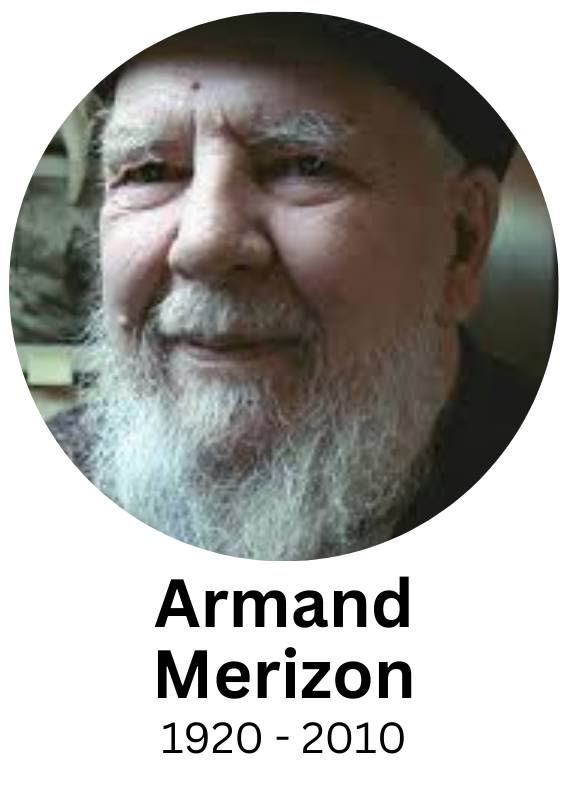
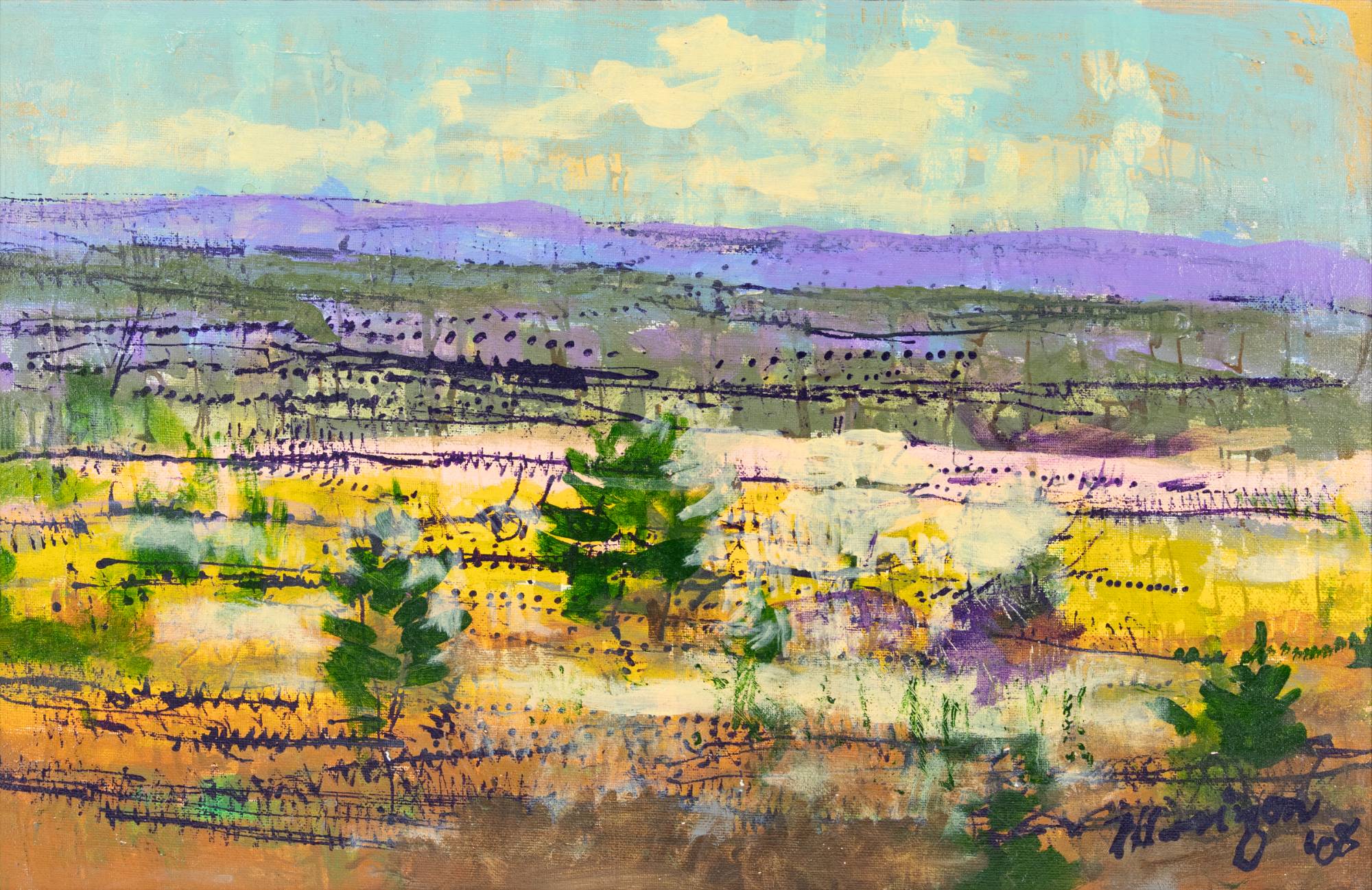
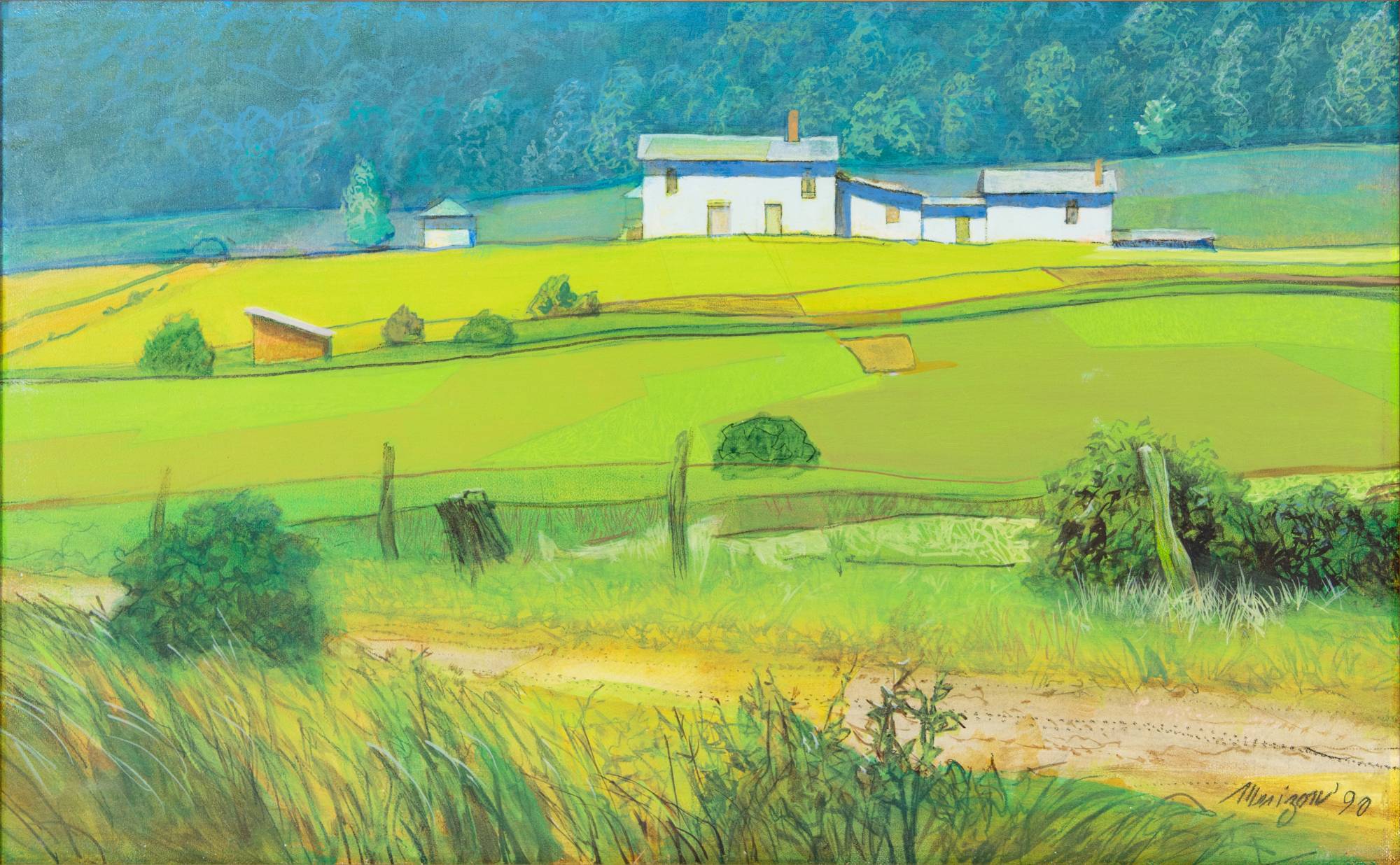
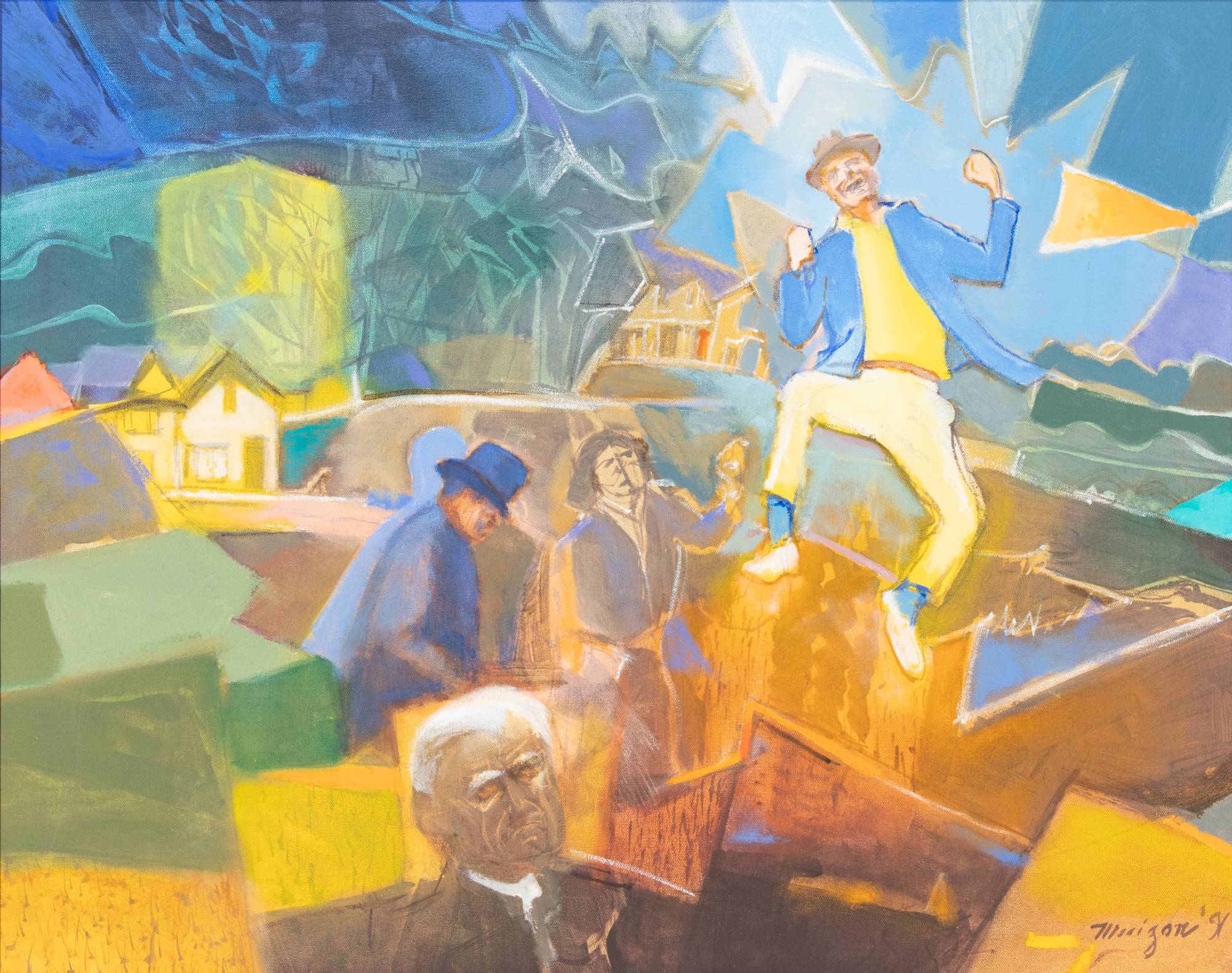
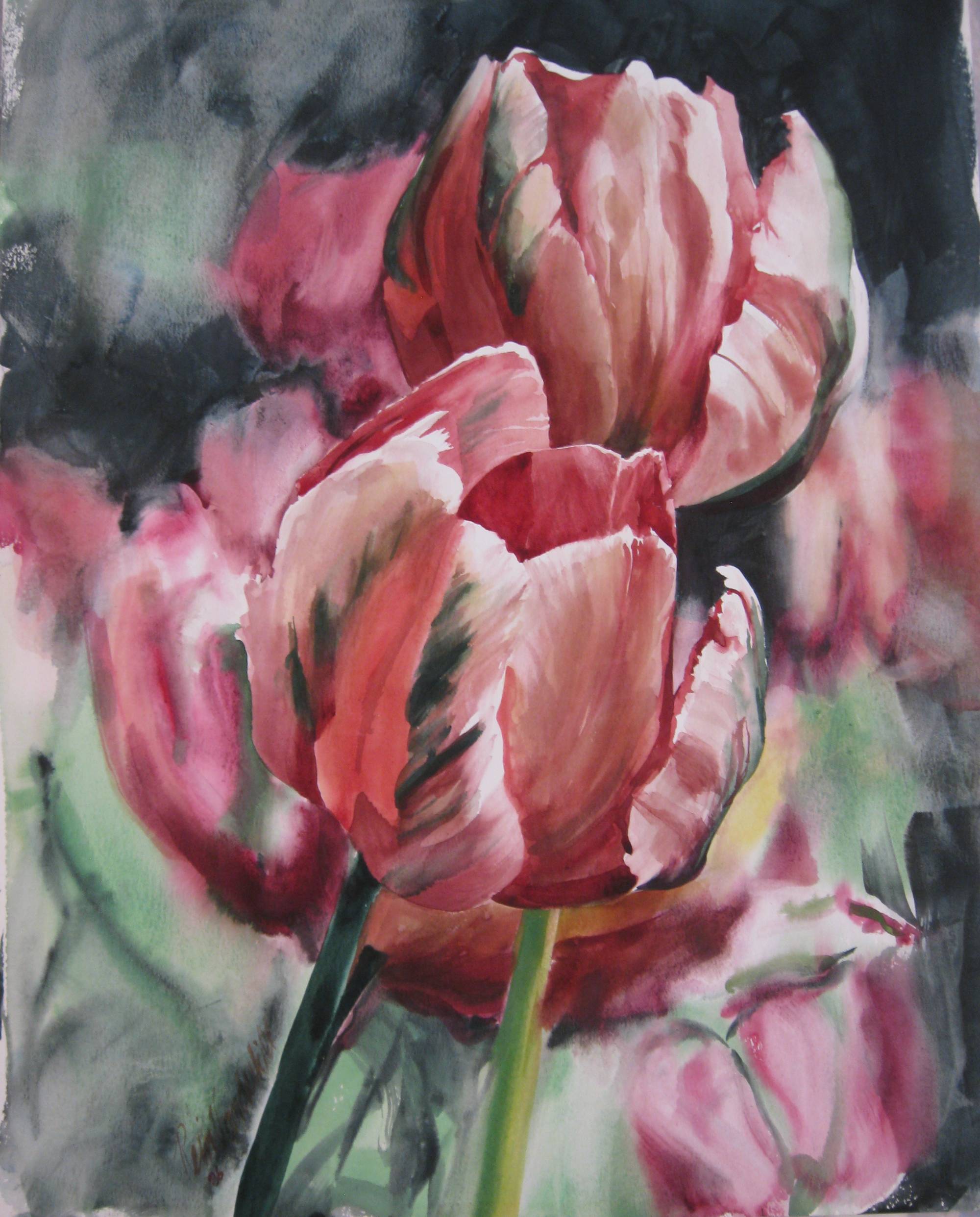
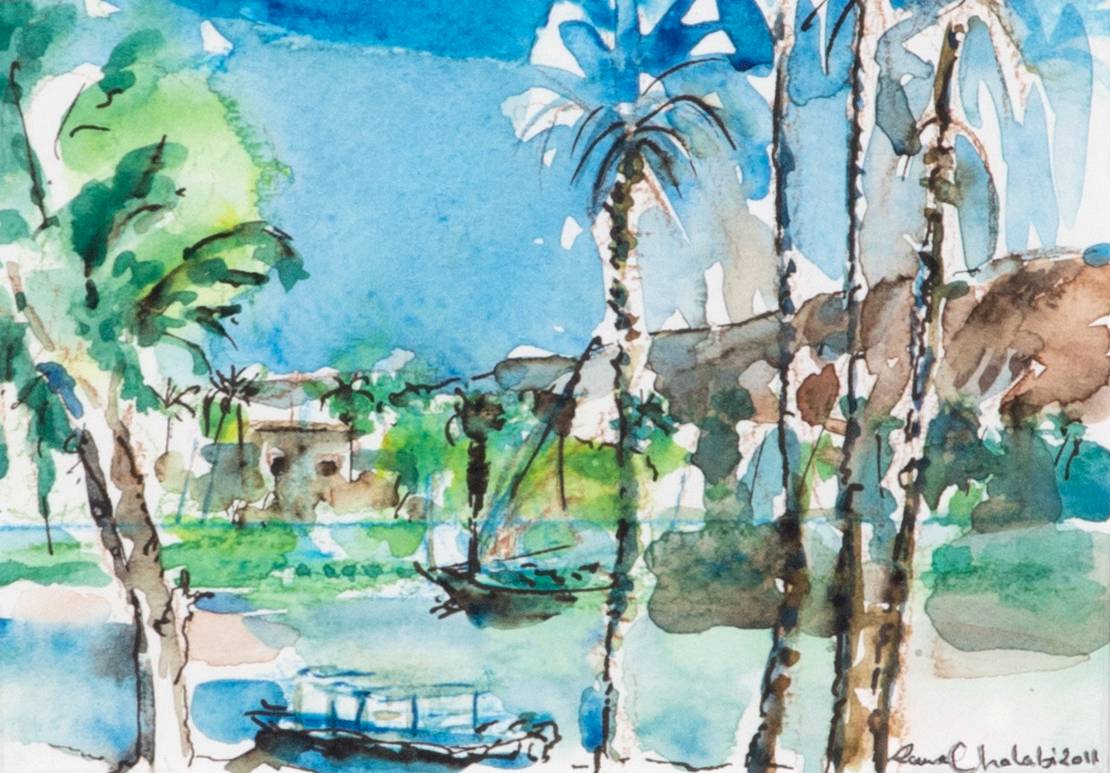
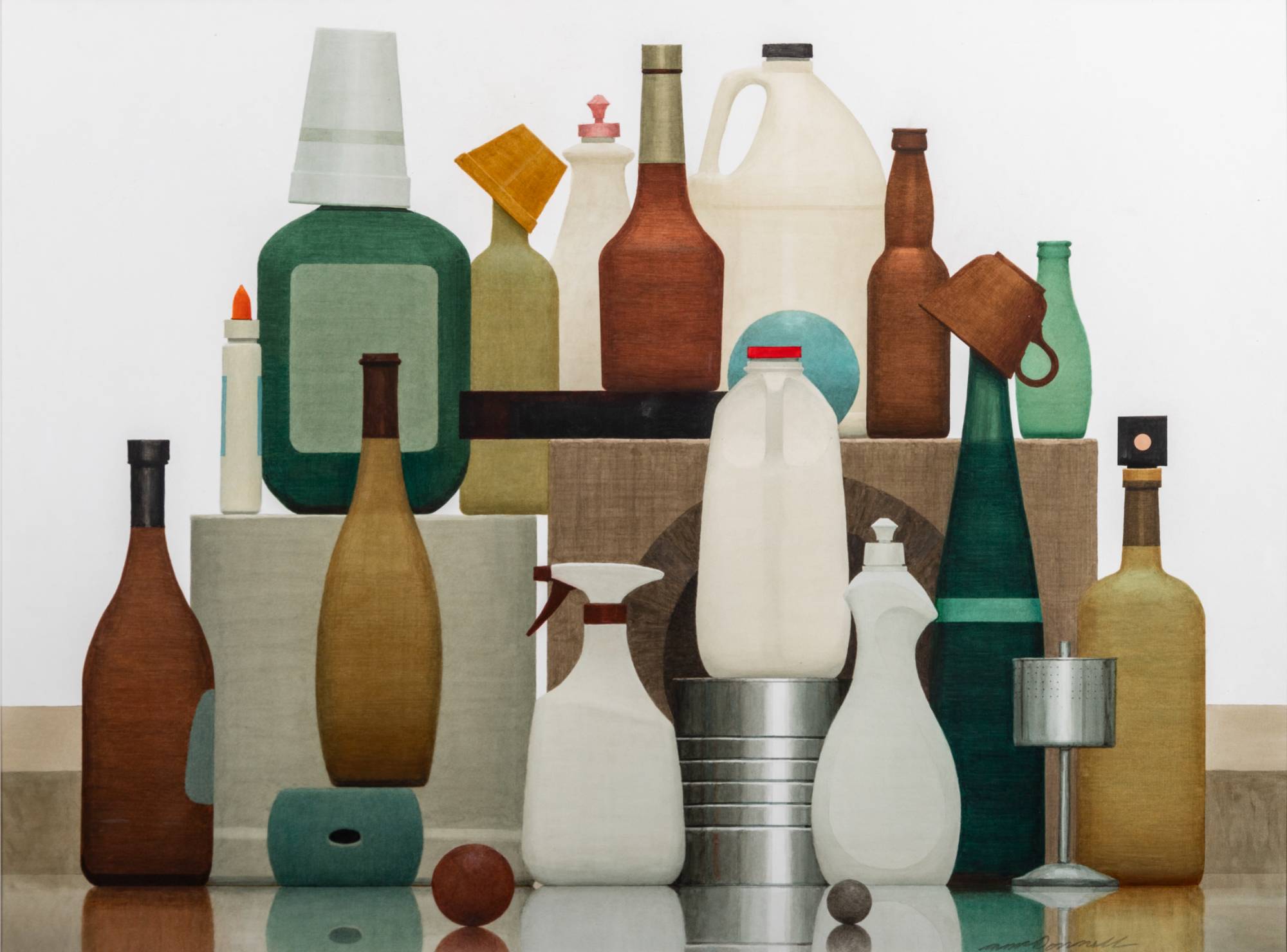
[1724773073].jpg)
